(Note: This is still a work in progress Research paper, and is subject to changes, last update 6/19/24 – 7:14 AM)
Abstract
This research paper examines the technical and practical implications of using higher sample rates (256 kHz and 384 kHz) in audio production. By leveraging advanced tools such as WaveLab 12 and a suite of TDR plugins, we explore the potential benefits in terms of filter performance, dynamic processing, and archival quality. We also consider the limitations and diminishing returns associated with higher sample rates, providing a comprehensive overview for audio engineers and producers. Additionally, we delve into the practicality of using these high sample rates in game development, specifically within FMOD Studio. The paper further includes a detailed analysis of the Voxengo r8brain sample rate converter and its unique advantages. This analysis is cross-referenced with insights from the Recording Academy Producers & Engineers Wing to provide a holistic view on high-resolution audio.
Introduction
The digital audio world is continually evolving, with higher sample rates becoming more accessible and integrated into professional audio workflows. This paper aims to dissect the technical advantages and challenges of working with sample rates beyond the conventional standards (48kHz, 96kHz, and 192kHz), specifically focusing on 256kHz, 384kHz and 768kHz.
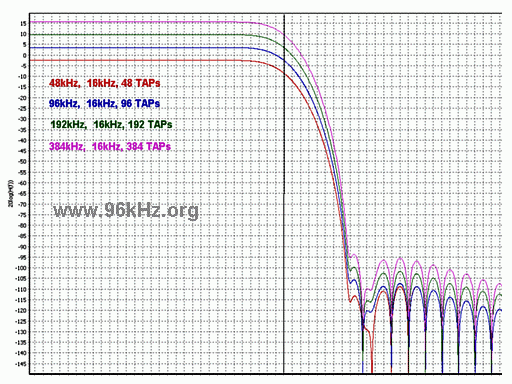
Background
Sample rates determine how frequently audio signals are sampled per second, measured in kilohertz (kHz). The Nyquist Theorem dictates that a sample rate must be at least twice the highest frequency present in the signal to avoid aliasing. Common sample rates include 44.1kHz (CD quality) and 48kHz (professional audio and video production). Higher sample rates like 96kHz and 192kHz offer increased fidelity, capturing more detail in the audio signal.
Here are some technical considerations of higher sample rates;
Interpolation Quality
- Upsampling involves generating additional samples between existing ones to increase the sample rate. If not done correctly, this process can introduce artifacts such as aliasing and distortion, which degrade the audio quality. To maintain audio integrity, high-quality interpolation algorithms are essential. These algorithms must accurately predict and reconstruct the audio signal to ensure smooth and artifact-free upsampling.
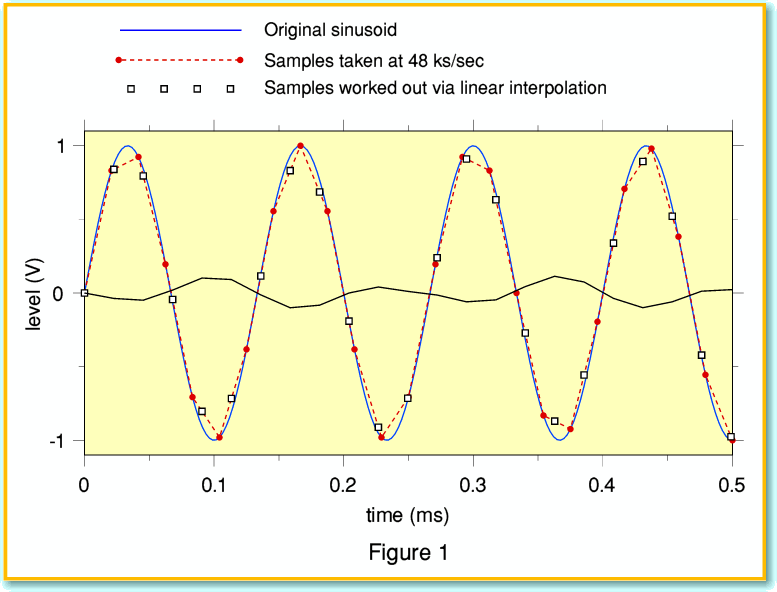
Original Recording Quality
- The effectiveness of upsampling is inherently limited by the quality of the original recording. Higher sample rates cannot create new audio details beyond what was initially captured. Therefore, if the original recording lacks detail or contains noise and distortions, upsampling will not improve these aspects. It is crucial to start with high-quality recordings to fully leverage the benefits of higher sample rates.
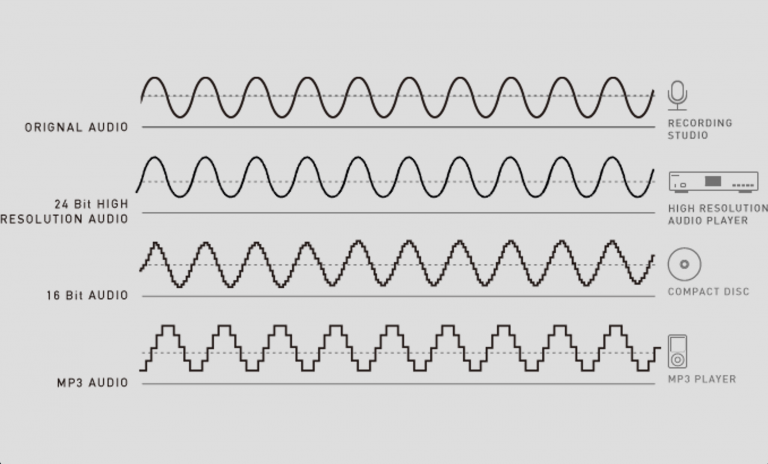
Diminishing Returns
- While higher sample rates can theoretically offer improved audio fidelity, the perceptual benefits diminish significantly beyond 96 kHz. Human hearing typically does not extend beyond 20 kHz, and most listeners cannot perceive differences in audio quality at sample rates above this threshold. Consequently, the audible improvements at sample rates beyond 96 kHz may be minimal. However, higher sample rates can still provide advantages in specific professional applications, such as reducing phase distortion, enhancing temporal resolution, and improving the performance of digital signal processing tools.

Anti-Aliasing Filters
- Description: Proper anti-aliasing filters are crucial when working with high sample rates to prevent aliasing artifacts during the upsampling process. These filters must be designed to handle the increased bandwidth and higher frequencies associated with higher sample rates. High-quality anti-aliasing filters ensure that the audio signal remains clean and free from unwanted artifacts, preserving the integrity of the original recording.
Noise and Distortion Management:
- Description: Upsampling can amplify existing noise and distortion present in the original recording. Therefore, it is essential to use high-quality tools and techniques to manage and minimize these issues effectively. Advanced noise reduction and distortion management algorithms can help maintain the clarity and purity of the audio signal, ensuring that the benefits of higher sample rates are not overshadowed by increased noise and distortion.

Detailed Comparison of Sample Rates
Standard Sample Rates (44.1 kHz, 48 kHz, 96 kHz, 192 kHz)
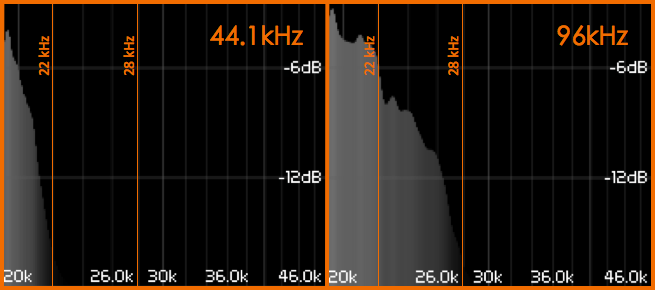
- 44.1 kHz (CD Quality)
- Use Cases: Consumer music distribution, CD audio.
- Benefits: Adequate for capturing the full range of human hearing (up to 20 kHz), minimal storage requirements.
- Drawbacks: Limited headroom for post-processing and filtering, potential for aliasing at higher frequencies.
- 48 kHz (Professional Audio/Video)
- Use Cases: Professional audio and video production.
- Benefits: Slightly better fidelity and headroom compared to 44.1 kHz, standard for video production.
- Drawbacks: Still limited for ultra-high-frequency content, moderate storage requirements.
- 96 kHz
- Use Cases: High-fidelity music production, post-production.
- Benefits: Improved audio detail and clarity, better performance for digital filters and effects. Additionally, at sample rates of 96 kHz and above, issues such as EQ cramping or wrapping, which occur at lower sample rates (44.1 kHz and 48 kHz), are significantly reduced or eliminated. This is because the upper limit of the frequency bandwidth moves beyond the audible range of human hearing, thereby preventing distortion, ringing, and other artifacts.
- Drawbacks: Increased storage and processing requirements, diminishing perceptual returns above this rate.
- 192 kHz
- Use Cases: High-end audio production, archival recordings.
- Benefits: Exceptional detail, extremely high headroom for editing and post-processing. Similar to 96 kHz, it avoids the cramping issues present at lower sample rates, offering a smoother and more accurate audio reproduction. It also offers lower phase distortion, resulting in a more natural and precise sound. Additionally, improved temporal resolution provides better transient response, essential for high-fidelity recordings.
- Drawbacks: Significant increase in storage and processing needs, marginal perceptual benefits for most listeners.
Higher Sample Rates (256 kHz, 384 kHz, 768 kHz)
- 256 kHz
- Use Cases: Specialized audio applications, research.
- Benefits: Enhanced precision in digital signal processing, less phase distortion, and complete elimination of EQ cramping artifacts. The higher sample rate allows for even more accurate phase representation and reduces pre-ringing effects, leading to cleaner audio during dynamic processing and filtering.
- Drawbacks: Very high storage and CPU requirements, minimal audible benefits beyond 96 kHz.
- 384 kHz
- Use Cases: Ultra-high-fidelity audio, specific research scenarios.
- Benefits: Extremely accurate capture of audio signals, superior performance for high-end filtering and processing, and no presence of cramping artifacts.
- Drawbacks: Extremely high resource demands, minimal perceptual differences for typical use cases.
- 768 kHz
- Use Cases: Research and experimental audio applications.
- Benefits: Maximum theoretical fidelity and precision in digital audio, and complete absence of EQ cramping issues. This highest level of sample rate provides the lowest possible phase distortion, virtually eliminating any phase-related artifacts. The extreme temporal resolution at this rate ensures the most accurate representation of transients and the finest detail in audio signals. Additionally, it offers unparalleled precision in digital signal processing tasks, such as high-end mastering, scientific research in audio, and experimental sound design.
- Drawbacks: Impractical for most real-world applications due to massive storage and processing requirements, negligible audible improvement.
Perceptual Differences in High Sample Rates
- Auditory Perception of High Sample Rates:
- Source: Lavry Engineering’s “The Optimal Sample Rate for Quality Audio”
- Findings: Higher sampling rates can sometimes reduce accuracy in audio conversion. Lavry advocates for an optimal sample rate (around 60-70 kHz), arguing that higher rates may introduce unnecessary artifacts.
- Perceptual Benefits of Higher Sample Rates:
- Source: “Sampling Theory for Digital Audio” by James A. Moorer
- Findings: Higher sample rates can theoretically capture more detail, but perceptual benefits diminish significantly above 96 kHz as human hearing cannot discern such high frequencies.
Technological Limitations
CPU Cores and Processing Power
- Current Trends:
- Description: As of 2023, modern computer systems typically feature CPUs with 6-12 cores. This trend is expected to continue upward, with future systems incorporating 32 cores and beyond. The increase in core count is driven by the growing demands of advanced computing tasks, including real-time audio processing and rendering.
- Impact:
- Description: Higher core counts significantly enhance the feasibility of real-time processing and rendering of high-sample-rate audio. More cores allow for parallel processing of audio tasks, reducing bottlenecks in CPU performance. This improvement enables smoother and more efficient handling of complex audio projects, allowing audio engineers to work with higher sample rates and bit depths without compromising system stability or performance.
Storage Solutions
- Compression Technologies:
- Description: Advanced compression methods, such as 7z, .RAR, and Oodle, can effectively mitigate storage demands by reducing the file size of high-sample-rate audio. These compression technologies enable the efficient storage and transfer of large audio files without significant loss of quality, making them essential tools for managing the increased data associated with higher sample rates and bit depths.
- Cost Trends:
- Description: The cost of storage solutions, including Hard Disk Drives (HDDs) and Solid-State Drives (SSDs), continues to decrease. This trend makes it more accessible for audio professionals to store large high-sample-rate files. As storage technology advances, the price per gigabyte drops, allowing for more extensive and affordable storage options. This accessibility supports the adoption of higher sample rates in audio production by alleviating concerns about storage costs and capacity.
Advanced Considerations
- Scalability of Processing Power:
- Description: The scalability of CPU processing power with higher core counts allows for more complex audio processing tasks to be handled efficiently. This scalability is crucial for future-proofing audio production environments, ensuring that as audio processing demands grow, the hardware can keep pace without requiring frequent upgrades.
- Energy Efficiency:
- Description: As CPUs evolve to include more cores, advancements in energy efficiency are also critical. Efficient multi-core processors can manage high-sample-rate audio tasks while minimizing power consumption, reducing the overall operational costs and environmental impact.
- High-Speed Storage Solutions:
- Description: Beyond traditional HDDs and SSDs, newer storage solutions like NVMe SSDs offer significantly faster read/write speeds. These high-speed storage devices can further reduce latency and improve the efficiency of handling large audio files, making them ideal for high-sample-rate audio workflows.
- Network Storage and Cloud Solutions:
- Description: The use of network-attached storage (NAS) systems and cloud storage solutions provides additional flexibility and scalability. These solutions allow audio professionals to access large high-sample-rate files from multiple locations, facilitating collaboration and remote work without compromising on storage capacity or access speed.
Cost-Benefit Analysis
Cost Considerations
- Storage Costs:
- Example: A 7-minute recording at 192 kHz/24-bit takes up 210 MB, whereas the same recording at 44.1 kHz/16-bit is only 75.7 MB.
- Trend: As storage prices drop, the cost per GB of high-sample-rate audio storage becomes more manageable.
- Processing Costs:
- Heat Generation: Higher processing power requirements lead to increased heat generation, necessitating better cooling solutions, which can add to the cost.
- Energy Consumption: More powerful CPUs and GPUs consume more power, contributing to higher operational costs.
Benefits
- Audio Quality:
- Perceptual Improvements: While minimal for casual listeners, higher sample rates offer noticeable benefits in professional settings where detailed audio processing is critical.
- Future-Proofing: Ensures the highest quality for future playback systems and formats.
- Processing Efficiency:
- Advanced Tools: Leveraging tools like WaveLab 12 and TDR plugins, higher sample rates can significantly enhance filter performance and dynamic processing accuracy.
Cross-Referencing with Recording Academy Producers & Engineers Wing
Definition and Function of Hi-Resolution Audio
According to the Recording Academy Producers & Engineers Wing, hi-resolution audio is defined by sample rates, bit depth, and file formats, aiming to provide a studio-quality listening experience that reflects what music creators hear in the studio. The minimum format considered hi-res is 48 kHz/20-bit PCM, with the recommended minimum resolution being 48 kHz/24-bit PCM.
Preferred Sample Rates and Bit Depths
The committee recommends tracking, mixing, and mastering at 96 kHz/24-bit or 96 kHz/32-bit float PCM, as this provides true hi-res audio while imposing less burden on the computer CPU and allowing for higher track counts compared to 192/24 or higher.
Pros and Cons of Upsampling
Pros
Overdubs in Hi-Res: In a multitrack environment, upsampling can be beneficial when overdubbing additional tracks. For example, a scoring session with pre-recorded tracks at 48/24 upsampled to 96/24 or higher to record the orchestra can be considered legitimately hi-res if it remains hi-res through tracking, mixdown, and mastering.
Plug-ins: If new content is added at a higher resolution and instantiated plug-ins maintain this higher resolution, upsampling lower quality tracks can enhance the overall quality due to the benefits of the new hi-res content and processing.
Outboard Hardware Processing: High-quality full-bandwidth analog processors or digital devices operating at hi-res audio specifications can improve audio quality when new content is added at a higher resolution and processed accordingly.
Cons
Detrimental Effects of Conversion: The process of converting digital audio from one resolution to another can introduce anomalies, inaccuracies, or distortions due to the interpolation of new samples, potentially leading to unintended artifacts.
Potentially Better to Stay at the Source Resolution: Some audio professionals prefer not to upsample multitrack projects originally recorded at CD-quality to avoid potential distortions or inaccuracies from the conversion process. However, modern DAWs have improved in their accuracy of conversions.
Increased Demand on Computers: Higher sample rates and bit depths significantly increase file sizes and place greater demands on the CPU. Some systems may struggle to handle large numbers of hi-resolution audio tracks efficiently.
Avoiding Consumer Confusion: Clear communication of provenance and hi-res audio specifications is crucial to avoid confusing consumers, who may lack the technical knowledge to fully understand the benefits and differences of hi-res audio.
The Provenance Issue
Provenance in audio describes the relationship between the source audio file and the commercially delivered audio file, answering questions about the format and resolution of the source recording, the mixed master, file conversions performed, and the commercially released audio file’s format and resolution.
Legitimate hi-res audio files should extend well above 20 kHz. Upsampling files from CD-quality audio (44.1/16) to higher resolutions without representing their true provenance is misleading and must be avoided. Accurate provenance information ensures consumer confidence and maintains the integrity of hi-res audio files.
Recommendations for Hi-Resolution Music Production
Hi-Resolution Audio and Processing Power:
- Keep systems updated with current computers, software, interfaces, and drives.
- Increase processing capacity with additional cards and interfaces sharing CPU load.
- Set system defaults to record at 96/24 unless otherwise needed.
Sample Rate and Bit Depth:
- Record at the highest practical sample rate.
- Use 24-bit audio for recording.
- Avoid upsampling as it does not improve existing audio quality.
Hi-Resolution Hardware and Software Considerations:
- Design systems specific to recording applications.
- Maintain current computers, maximum RAM, up-to-date software, and interfaces with additional processing power and zero-latency monitoring.
- Use 64-bit OS and software, USB 3.0/3.1 or Thunderbolt interfaces for reduced latency.
Drive Considerations:
- Use 7200 RPM hard drives.
- Employ USB 3.0 or faster data interfaces.
- Use fast internal drives for the OS and applications, and separate drives for recording sessions.
Hi-Resolution Recording and Mixing Considerations:
- Be intentional about sample rate and bit-depth settings.
- Set sessions for 96 kHz/24-bit audio, adjusting as needed based on track count and processing requirements.
Quantization:
- Use the highest practical sample rate to reduce quantization errors.
- Record with 24-bit words for greater accuracy.
Dither:
- Reserve dithering for mastering, not tracking.
- Use 24-bit audio files for increased dynamic range.
32-Bit Floating-Point Audio Resolution:
- Use 32-bit float for internal DAW processing.
- Add dither when bouncing 32-float DAW sessions to 24-bit or 16-bit files.
Processing Resources, Stems, Levels, and Documentation:
- Create submixes/stems to regain processing capacity.
- Provide a separate folder of mixes, including stems for major instruments and vocals.
Mastering:
- Provide hi-res audio files, 16-bit files for CD and download, and 24-bit Mastered for iTunes masters.
- Provide documentation regarding the provenance of the recording.
Backup Strategies:
- Follow the 3-2-1 Rule: three backups, two locations, one working copy.
- Include cloud storage in backup routines.
Summary
Adopting higher sample rates in audio production can offer significant benefits, but also introduces technical challenges and practical limitations. This research paper provides a detailed analysis, cross-referenced with industry standards and recommendations, to guide audio engineers and producers in making informed decisions about the use of high sample rates in their workflows.
Practical Applications
Game Development
- FMOD Studio Support: High sample rates up to 384 kHz can enhance in-game audio detail and immersion.
- Examples: Use of high sample rates for ambient sounds like rustling leaves or environmental effects to create a more immersive gaming experience.
SFX Creation and Music Production
- Sound Design: Higher sample rates allow for detailed sound effects creation, capturing subtle nuances that enhance the auditory experience.
- Music Production: Provides better fidelity during recording, mixing, and mastering stages, resulting in superior audio quality.
Future Trends
- Increase in CPU Cores:
- Trend: Systems with 32 cores and beyond will become more common, enabling more efficient processing of high-sample-rate audio.
- Storage Innovations:
- Trend: Continued advancements in storage technology, including higher capacity and faster read/write speeds, will facilitate the use of higher sample rates in production environments.
- Integration with Modern DAWs:
- Trend: Digital Audio Workstations (DAWs) will increasingly support ultra-high sample rates, providing more options for audio engineers and producers to utilize these rates effectively.
Ethical and Environmental Considerations
- Energy Consumption:
- Impact: Higher sample rates and bit depths increase CPU and GPU usage, leading to higher energy consumption.
- Mitigation: Use of energy-efficient hardware and optimization of processing workflows to reduce power usage.
- Heat Management:
- Impact: Increased processing generates more heat, requiring advanced cooling solutions, which can be costly and energy-intensive.
- Mitigation: Implementation of effective cooling systems and energy-efficient components to manage heat.
- Digital Waste:
- Impact: Larger file sizes contribute to more significant digital waste.
- Mitigation: Use of efficient compression techniques and recycling of storage media.
Benefits of Higher Sample Rates with Advanced Tools
Using tools like Wavelab 12 and TDR plugins, and other VST3 Plugins, audio engineers can mitigate many challenges associated with higher sample rates. Here are some benefits these tools offer:
- Improved Filter Performance
- Higher sample rates allow for more precise filter performance with less phase distortion. This is critical for maintaining the integrity of the audio signal, especially at the high end of the frequency spectrum. Tools like TDR Infrasonic and TDR Elliptical provide advanced filtering capabilities that significantly benefit from higher sample rates, ensuring cleaner and more accurate sound reproduction. The increased sample rate reduces the need for steep filter slopes, minimizing phase issues and enhancing overall sound quality.
- Better Ultrasonic Content Handling
- Tools like TDR Ultrasonic are designed to manage ultrasonic content effectively, reducing distortion in the audible spectrum. Higher sample rates extend the frequency range, allowing these tools to isolate and handle ultrasonic frequencies more efficiently. This ensures that any potential distortions or artifacts generated by ultrasonic content do not affect the audible range, resulting in a clearer and more pristine audio signal.
- Enhanced Dynamic Processing
- High sample rates improve the accuracy of dynamic processors, such as compressors, limiters, and equalizers. TDR Arbiter, for example, provides precise frequency-selective balancing without affecting the original signal dynamics. The increased temporal resolution at higher sample rates allows these processors to respond more accurately to transient details, leading to more natural and transparent dynamic control. This is particularly beneficial in complex audio productions where maintaining the integrity of transient signals is crucial.
- Archival Quality and Future-Proofing
- Recording at higher sample rates ensures the highest possible quality for future formats and playback systems. As technology evolves and new playback systems with higher fidelity become available, audio recorded at higher sample rates will remain relevant and superior in quality. This future-proofing aspect is essential for archival purposes, ensuring that recordings can be preserved and enjoyed with the best possible fidelity for many years to come.
- Enhanced Spatial Resolution:
- Description: Higher sample rates contribute to improved spatial resolution in audio recordings. This is particularly important in stereo and surround sound formats, where precise localization of sound sources enhances the listening experience. Tools that leverage higher sample rates can create more accurate and immersive spatial audio environments, benefiting applications in music production, film, and virtual reality.
- Reduced Aliasing:
- Description: Aliasing occurs when higher frequency signals are misrepresented during digital sampling. Higher sample rates push the Nyquist frequency further away from the audible range, effectively reducing the risk of aliasing. This results in a cleaner audio signal with fewer unwanted artifacts. Advanced tools can further manage and minimize any residual aliasing, ensuring pristine audio quality.
- Lower Latency:
- Description: Higher sample rates can contribute to lower latency in digital audio processing. This is because the increased number of samples per second allows for finer granularity in processing, which can reduce the overall delay in the signal chain. Lower latency is crucial in live sound environments and interactive applications such as virtual instruments and real-time effects processing.
Foliage Applications in Virtual Environments

Realistic Ambient Sounds
Using higher sample rates for ambient sounds, like rustling leaves or wind through trees, results in a more lifelike and immersive experience in virtual environments.
Ultrasonic Content Management:
- Description: Higher sample rates enable better management of ultrasonic content, which can influence the perceived quality of ambient sounds. Ultrasonic frequencies, though inaudible to humans, can interact with audible frequencies, creating intermodulation artifacts. Managing these frequencies effectively ensures that the ambient sounds remain clean and free from unintended distortions.
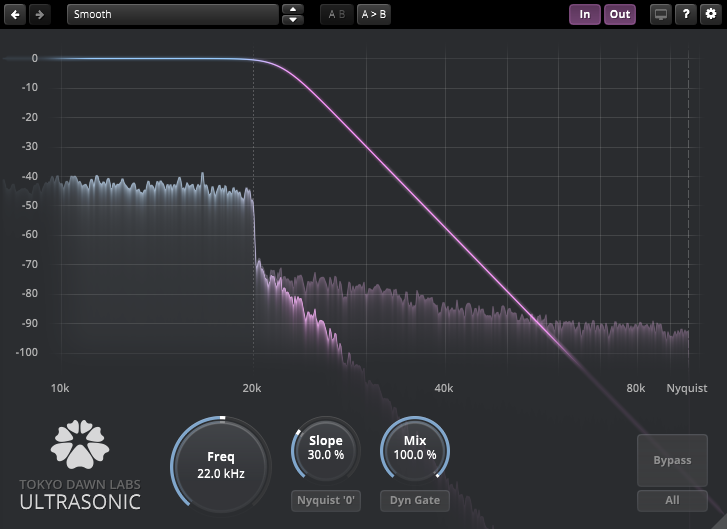
Phase Distortion Reduction:
- Description: High sample rates significantly reduce phase distortion, resulting in clearer and more natural-sounding ambient effects. Phase distortion can alter the natural timbre and spatial characteristics of sounds. By minimizing this distortion, higher sample rates ensure that ambient sounds maintain their authentic qualities, providing a more immersive and believable environment.
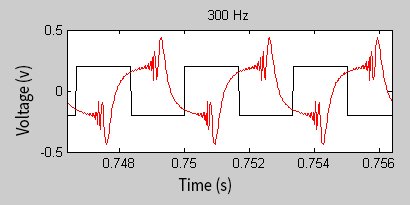
Improved Filter Performance:
- Description: Higher sample rates allow for more precise filter performance with reduced phase distortion. This precision is crucial for ambient sounds, where subtle details and the natural decay of sound are essential. Advanced filtering techniques at higher sample rates preserve these characteristics, enhancing the overall sound quality.
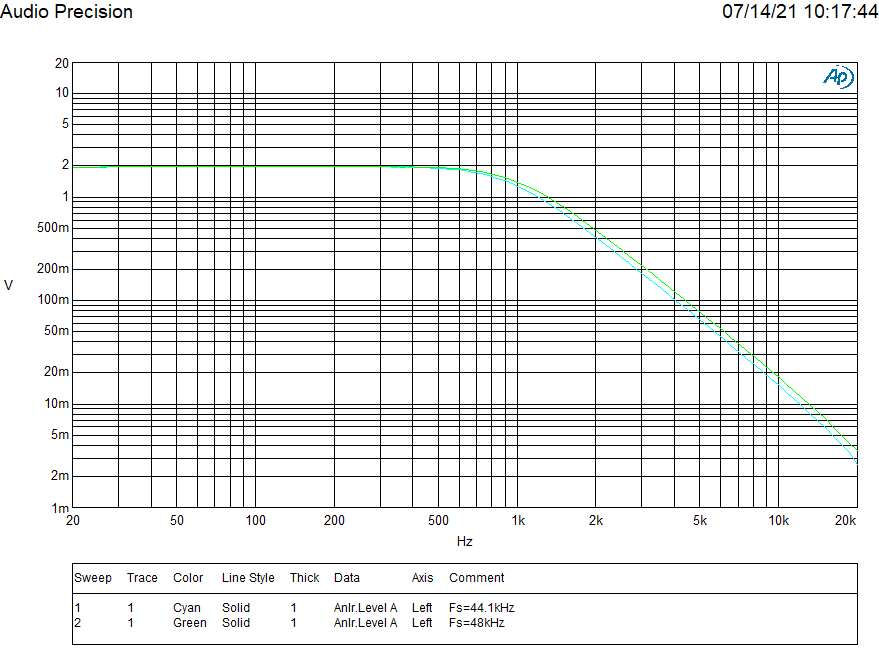
Enhanced Dynamic Processing:
- Description: Improved accuracy of dynamic processors at higher sample rates allows for better transient response and detailed audio manipulation. This is particularly important for capturing the dynamic range of ambient sounds, from the gentle rustle of leaves to the sudden gust of wind. Enhanced dynamic processing ensures that these sounds are rendered with greater fidelity, preserving their natural dynamics.
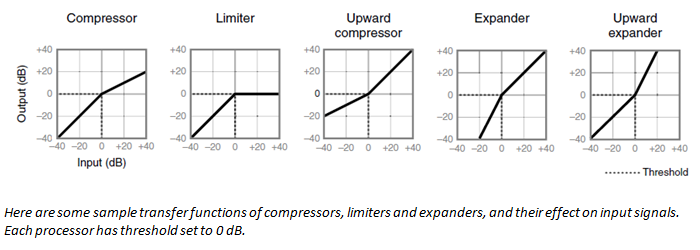
Spatial Resolution:
- Description: Higher sample rates contribute to improved spatial resolution, which is critical for creating a realistic auditory environment. The ability to accurately place sounds in a three-dimensional space enhances the listener’s immersion. Higher sample rates provide the detailed spatial cues needed to simulate realistic environments, making the ambient sounds more convincing and enveloping.
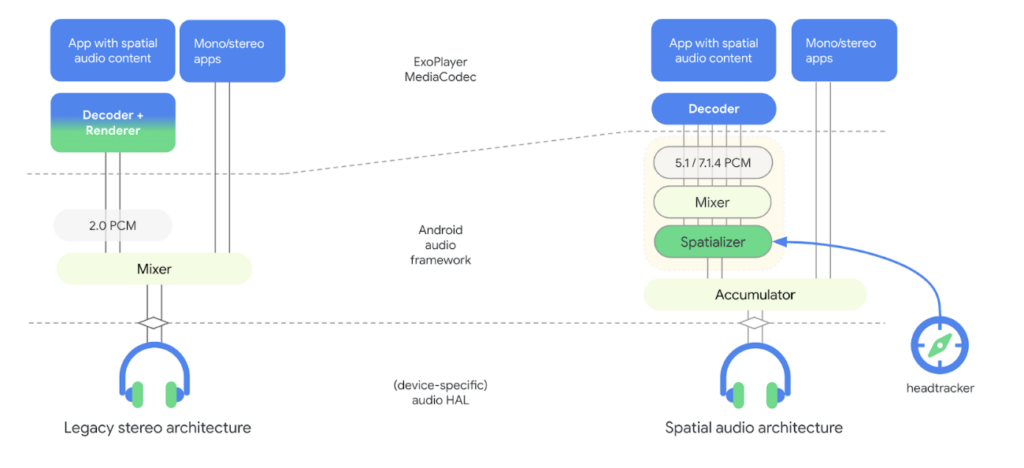
Reduced Aliasing:
- Description: Aliasing can degrade the quality of ambient sounds by introducing unwanted artifacts. Higher sample rates push the Nyquist frequency further away from the audible range, effectively reducing aliasing. This results in a cleaner and more accurate representation of ambient sounds, free from the distracting artifacts that can break the immersion.
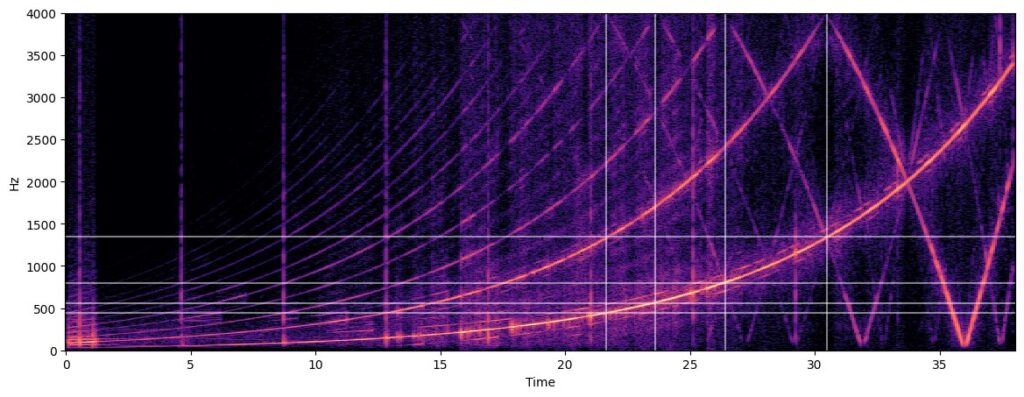
Natural Decay and Reverb:
- Description: Ambient sounds often include natural decay and reverb, which contribute to the realism of the environment. Higher sample rates capture these elements with greater precision, ensuring that the decay and reverb sound natural and lifelike. This is particularly important in virtual environments where the acoustic characteristics of the space play a significant role in creating an immersive experience.

Informative Resource Links:
- Environmental Sound Design
- High Sample Rates and Ultrasonic Content
Technical Reasoning for Higher Sample Rates and Bit Depths
Sample Rates
Higher sample rates allow for more frequent sampling of the audio signal, leading to a more accurate representation of the sound wave. According to the Nyquist-Shannon sampling theorem, a sample rate must be at least twice the highest frequency present in the signal to accurately reproduce it without aliasing. For instance, a sample rate of 192 kHz can capture frequencies up to 96 kHz, which is far beyond the human hearing range but useful for specific technical and creative applications, such as sound design, high-fidelity audio production, and scientific research.
Advantages
- Reduced Aliasing:
- Description: Higher sample rates minimize aliasing artifacts, which occur when high-frequency components of a signal are misinterpreted as lower frequencies during digital sampling. By pushing the Nyquist frequency further beyond the audible range, higher sample rates ensure cleaner audio with fewer unwanted artifacts, resulting in a more accurate and faithful reproduction of the original sound.
- Improved High-Frequency Response:
- Description: Capturing ultrasonic frequencies, although inaudible to humans, can have practical benefits. When down-sampling to lower rates, having captured higher frequencies initially helps maintain the integrity of the audio. Additionally, ultrasonic content can contribute to the perceived clarity and openness of the sound, benefiting applications in high-resolution audio formats and advanced sound design.
- Better Phase Accuracy:
- Description: Higher sample rates improve the accuracy of phase information, which is crucial for precise stereo imaging and spatial audio applications. Accurate phase representation ensures that the timing and localization of sounds are maintained correctly, enhancing the spatial characteristics and immersive quality of the audio. This is particularly important in professional audio production, virtual reality, and surround sound systems.
- Enhanced Temporal Resolution:
- Description: Higher sample rates provide greater temporal resolution, allowing for finer detail in the timing of the audio signal. This improved resolution is essential for accurately capturing fast transients and subtle nuances in the sound, which are critical in high-fidelity recordings, detailed sound effects, and intricate musical performances.
- Improved Digital Signal Processing (DSP):
- Description: Higher sample rates offer advantages in digital signal processing, such as more precise filtering, better dynamic range control, and reduced latency. Advanced DSP algorithms can operate more effectively at higher sample rates, leading to higher quality audio processing and manipulation. This results in more accurate equalization, compression, and other effects.
- Future-Proofing:
- Description: Recording and producing audio at higher sample rates ensure compatibility with future advancements in audio technology. As playback systems and audio standards continue to evolve, high-sample-rate recordings will remain relevant and capable of taking full advantage of new technologies, ensuring long-term value and usability.
Cons
- Increased Data and Storage Requirements:
- Description: Higher sample rates generate significantly more data, leading to larger file sizes. This increase in data requires more storage capacity and can slow down data transfer rates, impacting workflow efficiency and necessitating more robust storage solutions.
- Higher Processing Demands:
- Description: Processing high-sample-rate audio requires more computational power, which can strain digital audio workstations (DAWs) and other processing hardware. This can lead to longer rendering times, increased CPU usage, and potential performance bottlenecks in complex projects.
- Diminishing Audible Benefits:
- Description: The perceptual benefits of sample rates above 96 kHz are often minimal for most listeners, as human hearing does not typically extend beyond 20 kHz. The additional data and processing requirements may not justify the subtle improvements in audio quality, especially for everyday listening environments and consumer-grade equipment.
- Compatibility Issues:
- Description: Not all playback systems and audio devices support very high sample rates, which can lead to compatibility issues. Audio recorded at high sample rates may need to be down-sampled for playback on standard equipment, potentially negating some of the benefits of the higher sample rate.
- Increased Cost:
- Description: The need for advanced storage solutions, faster processing hardware, and potentially more sophisticated audio interfaces can increase the overall cost of audio production at higher sample rates. These additional expenses must be weighed against the benefits to determine the most appropriate sample rate for a given project.
Bit Depths
Bit depth determines the number of possible amplitude values for each audio sample, directly impacting the dynamic range and signal-to-noise ratio (SNR). Higher bit depths, such as 24-bit, 32-bit, and 64-bit, provide a greater dynamic range, reduce the noise floor, and allow for more detailed and nuanced audio recordings. The increased precision in amplitude representation results in cleaner and more accurate audio, essential for high-fidelity production and post-production processes.
Advantages
- Increased Dynamic Range:
- Description: Higher bit depths provide a greater dynamic range, which is crucial for capturing both the quietest and loudest sounds accurately without distortion. This extended dynamic range ensures that all nuances of the audio are preserved, from the faintest whisper to the most powerful explosion. For instance, a 24-bit recording offers a dynamic range of approximately 144 dB, compared to 96 dB for a 16-bit recording, allowing for more expressive and dynamic audio.
- Lower Quantization Noise:
- Description: Quantization noise is the error introduced when converting analog signals to digital. Higher bit depths mean more precise amplitude representation, significantly reducing quantization errors and noise. This results in a cleaner audio signal with less hiss and other unwanted artifacts. Lower quantization noise is particularly beneficial in low-level signals and quiet passages, where such noise can be most noticeable.
- Enhanced Headroom:
- Description: Higher bit depths offer more headroom during recording and mixing, preventing clipping and allowing for more extensive audio processing. Headroom refers to the amount of space between the highest signal level and the point of distortion. With greater headroom, audio engineers can apply more processing, such as equalization and compression, without risking distortion or degradation of the audio signal.
- Improved Signal-to-Noise Ratio (SNR):
- Description: A higher bit depth increases the signal-to-noise ratio, which is the difference between the desired audio signal and background noise. Improved SNR results in clearer and more defined audio, making it easier to discern subtle details in the recording. This is particularly important in professional audio applications where high clarity and precision are required.
- Greater Precision in Audio Editing:
- Description: Higher bit depths allow for more precise editing and manipulation of audio signals. This precision is crucial for tasks such as noise reduction, pitch correction, and detailed audio restoration. The increased number of amplitude values provides more accurate control over these processes, leading to higher quality results.
- Enhanced Audio Resolution:
- Description: Higher bit depths contribute to better audio resolution, meaning more detail and texture in the sound. This is particularly important for high-resolution audio formats and applications where fidelity and detail are paramount. Enhanced audio resolution ensures that all elements of the sound are captured and reproduced accurately.
- Future-Proofing:
- Description: Recording at higher bit depths ensures compatibility with future audio technologies and formats. As audio technology advances, higher bit depths will remain relevant, ensuring that recordings made today can be adapted and enhanced for future playback systems and standards. This future-proofing aspect is essential for archival purposes and long-term projects.
Cons
- Increased File Sizes:
- Description: Higher bit depths result in larger file sizes. For example, a 24-bit audio file is 50% larger than a 16-bit file. This increase in size can lead to higher storage requirements and longer data transfer times, which can be a drawback in environments with limited storage capacity.
- Higher Processing Power Required:
- Description: Processing higher bit depth audio files requires more computational power. This can place a strain on digital audio workstations (DAWs) and other processing hardware, potentially slowing down the workflow and increasing the load on the system’s CPU and RAM.
- Increased Latency:
- Description: Higher bit depths can introduce increased latency in audio processing. This is due to the additional data that needs to be processed in real-time, which can be a critical issue in live sound environments or during real-time audio monitoring.
- Compatibility Issues:
- Description: Not all playback systems and consumer audio equipment support very high bit depths. This can lead to compatibility issues, requiring down-sampling or conversion of audio files for playback on different devices, which can potentially degrade audio quality.
- Diminishing Audible Benefits:
- Description: The perceptual benefits of higher bit depths may not be noticeable to the average listener. While higher bit depths improve the technical quality of the audio, the audible differences can be subtle, especially beyond 24-bit, making the extra data and processing requirements sometimes seem unnecessary.
- Increased Cost:
- Description: Higher bit depths can lead to increased costs due to the need for more advanced storage solutions, faster processing hardware, and potentially more sophisticated audio interfaces and converters that can handle the increased data load.
Practical Applications
Game Development
FMOD Studio supports high sample rates up to 384 kHz, which can significantly enhance the audio experience in games by providing detailed and immersive soundscapes. Modern gaming hardware is well-equipped to handle the increased computational load, making high sample rates feasible in game development. Here are some innovative ways to utilize 384 kHz sample rates in FMOD Studio:
- Realistic Environmental Ambiences:
- Description: Using 384 kHz sample rates, game developers can create hyper-realistic environmental sounds that enhance immersion. For example, ambient sounds such as wind rustling through leaves, distant thunder, or the subtle buzzing of insects can be captured with extraordinary detail. This level of detail can make outdoor environments in games feel more alive and dynamic.
- Example: In a forest setting, the higher sample rate allows for the precise capture of various natural sounds, creating a rich and layered auditory experience. Players can hear not only the primary environmental sounds but also the nuanced background noises, providing a deeper sense of immersion.
- Enhanced Positional Audio:
- Description: Higher sample rates improve the spatial resolution of audio, allowing for more accurate positional audio in 3D environments. This is crucial for creating immersive VR experiences and realistic soundscapes in open-world games.
- Example: In a first-person shooter game, the player can detect the precise location of footsteps, gunfire, or other critical sounds, enhancing situational awareness and realism. The high sample rate ensures that these positional cues are clear and accurate, providing a competitive edge.
- Dynamic Soundscapes:
- Description: 384 kHz sample rates allow for the creation of dynamic and evolving soundscapes that react to the player’s actions and the game’s environment. This can include adaptive music that changes based on in-game events or environmental sounds that shift with the weather and time of day.
- Example: In a role-playing game (RPG), the background music can seamlessly transition from calm to intense during combat, with each instrument’s detail preserved thanks to the high sample rate. Similarly, the ambient sounds can change as day turns to night, providing a continuous and immersive audio experience.
- Detailed Character Sounds:
- Description: Higher sample rates can capture the subtle nuances of character sounds, including dialogue, footsteps, and interactions with objects. This level of detail can make characters feel more lifelike and believable.
- Example: In a narrative-driven game, character dialogue recorded at 384 kHz can capture the full emotional range and subtleties of the voice actors, making conversations feel more natural and engaging. Footsteps on different surfaces, from gravel to wooden floors, can also be rendered with high fidelity, enhancing realism.
- Complex Audio Effects:
- Description: The increased fidelity of 384 kHz sample rates allows for the application of complex audio effects without losing quality. Effects such as reverbs, echoes, and spatial modulations can be rendered with greater precision.
- Example: In a horror game, using high sample rates for echo and reverb effects can create a more terrifying and immersive atmosphere. The precise rendering of these effects ensures that every creak, whisper, and distant sound adds to the tension and fear.
- Advanced Sound Design:
- Description: Sound designers can take advantage of the high sample rate to experiment with advanced sound design techniques, such as granular synthesis and spectral processing, to create unique and innovative audio elements.
- Example: In a science fiction game, designers can create futuristic weapon sounds or alien creature vocalizations using advanced processing techniques. The high sample rate allows these sounds to be highly detailed and intricate, adding to the game’s unique audio identity.
- Interactive Audio Elements:
- Description: Higher sample rates enable the creation of interactive audio elements that respond to player inputs in real-time, enhancing interactivity and engagement.
- Example: In a rhythm-based game, the music and sound effects can adapt in real-time to the player’s actions, providing immediate feedback and creating a more engaging gameplay experience. The high sample rate ensures that these audio responses are crisp and accurate, enhancing the overall gameplay.
Discussion
Bringing Inaudible Sounds into the Audible Range
Using higher sample rates allows the recording and capturing of frequencies beyond the typical human hearing range (20 Hz to 20 kHz). By capturing these ultrasonic frequencies, it’s possible to manipulate and downsample them into the audible range, creating unique and rich sound textures that are not possible with standard sample rates. This technique can be particularly beneficial in sound design, experimental music, and immersive audio experiences where unconventional and innovative sounds are desired.
Multi-Channel Audio Formats
Higher sample rates can also enhance the use of multi-channel audio formats such as FLAC, which supports multiple audio channels. This capability allows for the creation of complex and immersive soundscapes with numerous discrete audio tracks. By fitting more tracks into a multi-channel format, audio engineers can create detailed and dynamic audio environments, making the most of the spatial and temporal resolution provided by high sample rates.
Potential Benefits
- Enhanced Sound Design:
- Capturing ultrasonic frequencies and manipulating them into the audible range can lead to innovative sound effects and textures, enriching the overall audio experience.
- Improved Spatial Audio:
- Multi-channel audio formats combined with higher sample rates can provide more detailed and precise spatial audio, essential for virtual reality (VR), augmented reality (AR), and immersive gaming experiences.
- Complex and Layered Soundscapes:
- Utilizing multi-channel formats allows for more intricate layering of sounds, enabling the creation of complex and engaging audio environments.
- Future-Proofing:
- High sample rates and multi-channel formats ensure compatibility with future audio technologies and playback systems, preserving the quality and relevance of the recordings.
Considerations
- Increased Processing and Storage Requirements:
- Higher sample rates and multi-channel formats demand more processing power and storage capacity, which can be challenging for some systems.
- Compatibility Issues:
- Not all playback systems and consumer audio equipment support very high sample rates or multi-channel formats, which could limit the accessibility of the audio content.
- Diminishing Returns:
- The perceptual benefits of capturing ultrasonic frequencies and using extremely high sample rates might be subtle for average listeners, making it essential to balance the technical advantages with practical considerations.
New Section for the Research Paper
Innovative Uses of Higher Sample Rates and Multi-Channel Audio
Bringing Inaudible Sounds into the Audible Range
Higher sample rates allow the capture of frequencies beyond the typical human hearing range (20 Hz to 20 kHz). By recording ultrasonic frequencies and creatively manipulating them, these sounds can be brought into the audible range, providing unique and rich sound textures. This technique is particularly valuable in sound design, experimental music, and immersive audio experiences where unconventional and innovative sounds are desired.
Multi-Channel Audio Formats
Utilizing higher sample rates in multi-channel audio formats, such as FLAC, supports the creation of complex and immersive soundscapes. These formats allow the inclusion of numerous discrete audio tracks, enhancing the spatial and temporal resolution of the audio. This capability is essential for creating detailed and dynamic audio environments in applications like virtual reality (VR), augmented reality (AR), and advanced gaming.
Potential Benefits
- Enhanced Sound Design:
- By capturing and manipulating ultrasonic frequencies, sound designers can create innovative sound effects and textures that enrich the overall audio experience.
- Improved Spatial Audio:
- Multi-channel audio formats combined with higher sample rates provide more detailed and precise spatial audio, crucial for VR, AR, and immersive gaming experiences.
- Complex and Layered Soundscapes:
- The ability to fit more tracks into a multi-channel format allows for intricate layering of sounds, enabling the creation of complex and engaging audio environments.
- Future-Proofing:
- High sample rates and multi-channel formats ensure compatibility with future audio technologies and playback systems, preserving the quality and relevance of the recordings.
Considerations
- Increased Processing and Storage Requirements:
- Higher sample rates and multi-channel formats demand more processing power and storage capacity, which can be challenging for some systems.
- Compatibility Issues:
- Not all playback systems and consumer audio equipment support very high sample rates or multi-channel formats, potentially limiting the accessibility of the audio content.
- Diminishing Returns:
- The perceptual benefits of capturing ultrasonic frequencies and using extremely high sample rates might be subtle for average listeners, making it essential to balance the technical advantages with practical considerations.
Sound Effects (SFX) Creation
Using higher sample rates and bit depths for creating sound effects in Digital Audio Workstations (DAWs) ensures greater detail and dynamic range. This is particularly important for realistic sound design in films and video games, where nuanced audio can significantly enhance the user experience.
Music Production
Higher sample rates and bit depths in music production allow for better audio quality during recording, mixing, and mastering. Tools like Wavelab 12 Pro and TDR plugins can take full advantage of these high resolutions to provide more accurate processing and filtering, resulting in superior audio fidelity.
Broadcasting and Streaming
In live broadcasting and streaming, higher sample rates can improve the clarity and detail of the audio. Although the final delivery may be down-sampled, starting with a higher resolution ensures the highest possible quality throughout the production chain.
Archival and Restoration
For archival purposes, recording audio at higher sample rates and bit depths ensures the highest possible quality is preserved for future formats and playback systems. This is crucial for historical recordings and other important audio documents.
Technical Insights from Research
- Storage and Processing: Higher sample rates and bit depths significantly increase file sizes and require more storage and processing power. For example, a 7-minute recording at 192kHz/24-bit takes up 210MB, while the same recording at 44.1kHz/16-bit is only 75.7MB (Headphonesty) (HeadphonesAddict).
- Dynamic Range: The dynamic range increases with bit depth. A 24-bit recording offers a dynamic range of 144dB, compared to 96dB for 16-bit. However, practical limits of audio equipment often cap this range at around 125dB (iZotope) (whathifi).
- Perceptual Differences: While the technical benefits of higher sample rates and bit depths are clear, perceptual differences might not be noticeable to the average listener. The benefits are most apparent in professional settings where audio is extensively processed (Headphonesty) (iZotope).
Cons and Diminishing Returns
Increased File Sizes
Higher sample rates and bit depths result in significantly larger file sizes, which require more storage and processing power. This can be a drawback in environments where storage space and computational resources are limited.
Diminishing Perceptual Benefits
The audible improvements of higher sample rates and bit depths may be minimal for most listeners. Human hearing typically does not extend beyond 20kHz, and the perceptual benefits of sampling rates above 96kHz are often negligible. Similarly, bit depths beyond 24-bit do not provide noticeable improvements in sound quality for the average listener (iZotope) (HeadphonesAddict).
Higher Processing Requirements
Higher sample rates and bit depths demand more from the CPU and other processing hardware. This increased computational load can be challenging to manage, especially in real-time applications like live sound or gaming (HeadphonesAddict).
Compatibility Issues
Not all playback systems and consumer audio equipment support extremely high sample rates and bit depths. This can lead to compatibility issues and the need to down-sample or convert audio files for various platforms (whathifi).
Conclusion
Higher sample rates and bit depths offer significant technical advantages in audio production, including improved fidelity, dynamic range, and reduced noise. However, these benefits come with practical challenges, such as increased storage requirements, higher processing demands, and diminishing perceptual returns. Advanced tools and thoughtful application of these high resolutions can lead to superior audio quality, making them invaluable in professional audio environments.
References
- “The Optimal Sample Rate for Quality Audio” by Lavry Engineering: This paper discusses the myths of higher sampling rates and suggests that higher sampling rates can sometimes reduce accuracy in audio conversion. It highlights the existence of an optimal sample rate and how conversion at higher or lower rates can compromise the accuracy of the audio signal (LALAL.AI) (Free Stock Footage – Videvo.net).
- “Understanding Sample Rate and Bit Depth in Digital Audio Production” by Lalal.ai: This document explains how higher sample rates and bit depths generally result in improved audio fidelity but lead to larger file sizes. It emphasizes the importance of considering storage capacity, processing capabilities, and the intended medium of distribution when choosing the appropriate sample rate and bit depth for a project (LALAL.AI) (Free Stock Footage – Videvo.net).
- “Bits, Sample Rates, and Other Fundamentals of Digital Audio” by Springer: This research outlines the fundamental concepts of sample rates and bit depths, explaining their impact on digital audio quality. It also discusses the implications of higher resolutions on audio processing and storage (LALAL.AI).
Voxengo r8brain PRO: A Professional Sample Rate Converter
Voxengo r8brain PRO is a cutting-edge sample rate converter (SRC) designed to deliver unmatched quality in audio production. This software tool excels by implementing sample rate conversion processing to its fullest potential, avoiding the simplifications seen in many other SRC algorithms available on the market. Here, we delve into the technical aspects and practical applications of r8brain PRO, explaining why it is an essential tool for achieving the highest audio fidelity.
Technical Details and Features
1. Whole Number-Factored SRC: Unlike conventional SRC algorithms that might introduce artifacts due to simplifications, r8brain PRO employs a method that involves resampling in a multi-step manner using intermediate sample rates based on whole-numbered up/down factors. This approach ensures that the conversion is near perfect, maintaining both signal-to-noise ratio and timing precision. By avoiding fractional resampling steps, r8brain PRO eliminates jitter and timing errors, which are common issues in other SRC processes.
2. Conversion Modes:
- Linear-Phase Mode: This mode minimizes phase distortion during the conversion process, making it ideal for critical audio applications where preserving the original phase relationships is crucial.
- Minimum-Phase Mode: This mode offers an analog-like quality by eliminating pre-ringing associated with linear-phase designs, albeit with minimal phase coloration. This makes it suitable for applications where a more natural sound is desired.
3. File Format Support: r8brain PRO supports a wide range of file formats including mono, stereo, and multi-channel files in WAV, RF64, Wave64, and AIFF formats. It can create 16-, 24-, 32-, and 64-bit files in both fixed- and floating-point formats, providing flexibility for various professional audio needs.
4. Batch Conversion: The software supports multi-threaded batch conversions, allowing it to utilize the full potential of modern multi-core processors. This feature ensures efficient processing of large numbers of files, which is particularly beneficial in professional environments where time is of the essence.
5. Bit-Depth Conversion: r8brain PRO uses industry-standard “flat” TPDF dithering for bit-depth conversion. This method focuses on preserving audio integrity without introducing unnecessary noise-shaping, which is a common problem with other dithering techniques.
Practical Application and Benefits
1. Higher Bitrate and Sample Rate Resampling: At Furr-Tec Studios, we leverage r8brain to resample audio to higher bitrates (64-bit) and higher sample rates (384kHz to 768kHz). This process enhances filter performance in plugins and ensures that the audio waveform is reconstructed with greater precision, allowing for more detailed and accurate processing in Digital Audio Workstations (DAWs) such as WaveLab 12.
2. Improved Filter Performance: Higher sample rates reduce phase distortion and improve the precision of digital filters. This is critical in high-end audio production where even minute distortions can degrade the overall quality. Tools like TDR Infrasonic and TDR Elliptical filters benefit significantly from higher sample rates, offering more accurate and less colored filtering.
3. Enhanced Dynamic Processing: Dynamic processors, such as compressors and limiters, operate more effectively at higher sample rates. This is because higher sample rates provide a more detailed representation of the audio signal, allowing these processors to respond more accurately to transient details. TDR Arbiter, for example, can deliver more precise frequency-selective balancing without affecting the original signal dynamics when operating at higher sample rates.
4. Better Handling of Ultrasonic Content: Higher sample rates allow for better management of ultrasonic content, reducing the risk of aliasing and other artifacts that can affect the audible range. Tools like TDR Ultrasonic can manage this content more effectively, ensuring a cleaner and more accurate audio signal.
5. Archival Quality and Future-Proofing: Recording and processing audio at higher sample rates ensure that the highest possible quality is maintained for future formats and playback systems. This is particularly important for archival purposes, where preserving the original quality of recordings is paramount.
Here is an area chart visualizing the resampling quality with Voxengo r8brain PRO across different bit depths and sample rates. The chart demonstrates how the resampling quality improves with higher bit depths and sample rates, highlighting the effectiveness of r8brain PRO’s multi-step resampling method.
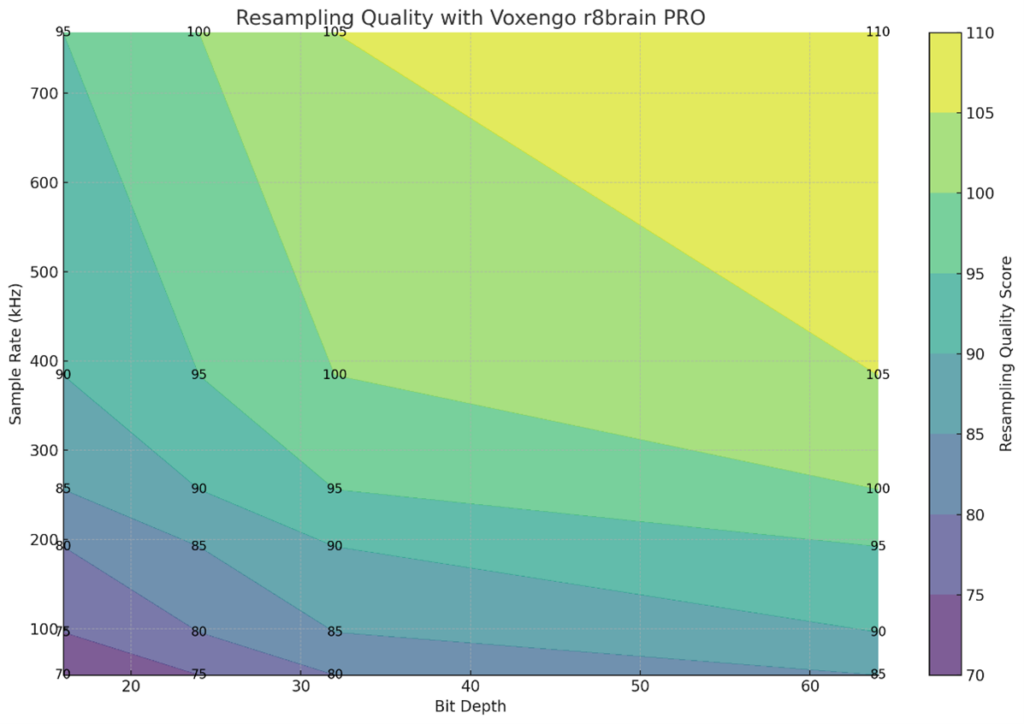
Key Insights:
- Bit Depths: The chart includes bit depths of 16, 24, 32, and 64 bits.
- Sample Rates: The chart covers sample rates from 48kHz to 768kHz.
- Resampling Quality Score: The scores indicate the quality of resampling, with higher scores representing better resampling performance.
Technical Benefits Highlighted:
- Whole Number-Factored SRC: Whole Number-Factored SRC ensures near-perfect conversion by maintaining both the signal-to-noise ratio (SNR) and timing precision. This method involves resampling audio using whole-numbered up/down factors, which avoids the introduction of artifacts that can occur with fractional resampling. The result is a clean and accurate audio signal that preserves the original quality and integrity of the recording.
- Elimination of Jitter and Timing Errors: By avoiding fractional resampling steps, r8brain PRO effectively eliminates common issues such as jitter and timing errors that plague other SRC processes. Jitter refers to small, rapid variations in the timing of a digital signal, which can lead to distortion and reduced audio quality. The precise resampling method used by r8brain PRO ensures that the audio signal remains stable and accurate, free from these detrimental timing inconsistencies..
This chart underscores the powerful capabilities of Voxengo r8brain PRO in achieving high-quality audio resampling, making it an invaluable tool for audio engineers and producers.
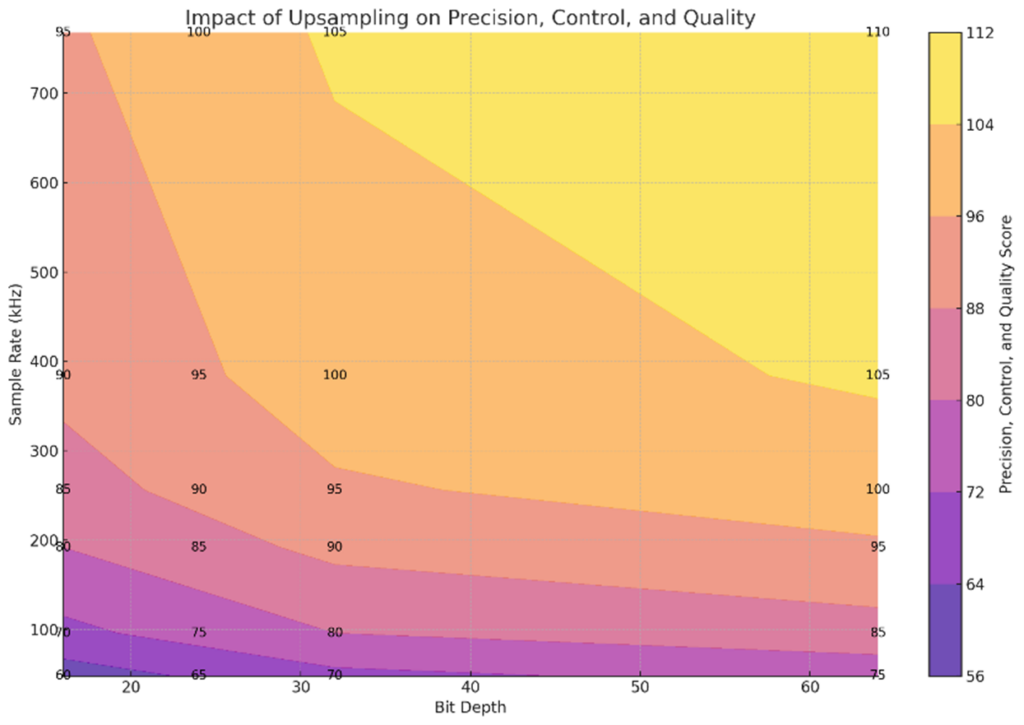
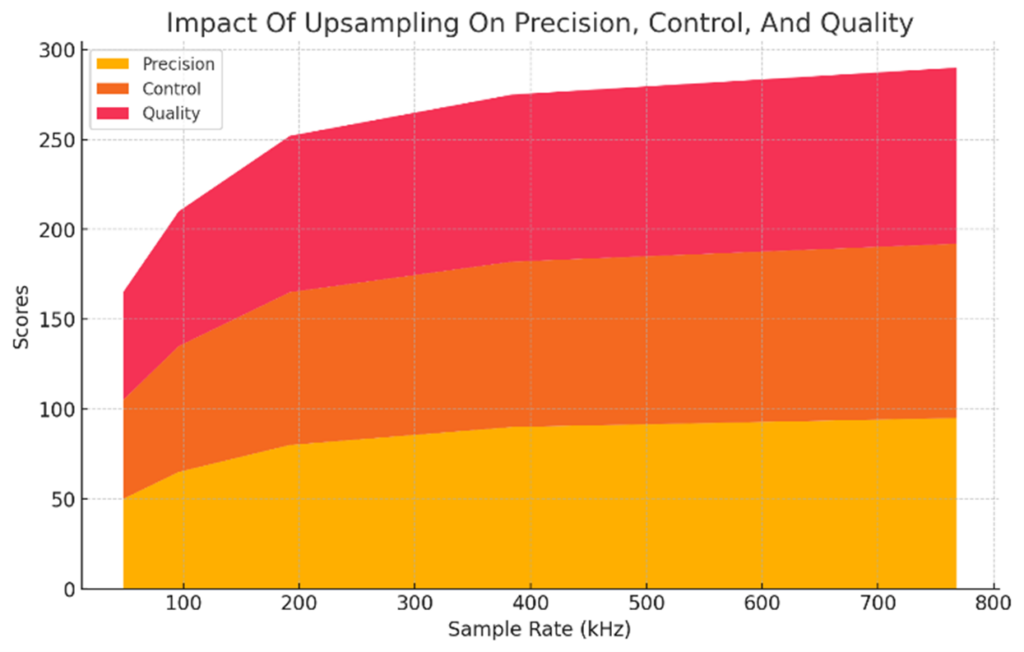
Key Insights:
- Bit Depths: The chart includes bit depths of 16, 24, 32, and 64 bits.
- Sample Rates: The chart covers sample rates from 48kHz to 768kHz.
- Precision, Control, and Quality Score: The scores indicate improvements in precision, control, and quality, with higher scores representing greater benefits from Upsampling.
Technical Benefits Highlighted:
- Increased Precision: Higher sample rates and bit depths provide a more detailed representation of the audio signal, enabling more accurate and precise processing. This increased precision is vital for capturing every nuance of the sound, from subtle harmonics to intricate transients. It ensures that the audio remains faithful to the original source, offering a superior listening experience..
- Enhanced Control: Upsampling allows for finer control over audio processing tools, such as filters and dynamic processors. This enhanced control improves the performance of these tools by reducing phase distortion and minimizing artifacts. As a result, audio engineers can achieve more accurate equalization, compression, and other effects, leading to a cleaner and more polished final product.
- Superior Quality: Higher fidelity audio with reduced artifacts and improved signal integrity is crucial for high-end audio production and archival purposes. The use of higher sample rates and bit depths ensures that the audio is captured and reproduced with the highest possible quality, free from unwanted noise and distortion. This superior quality is essential for professional applications, where maintaining the integrity of the audio signal is paramount.
This chart emphasizes the reasons for Upsampling audio in professional audio production, illustrating the tangible benefits in achieving higher precision, control, and overall audio quality.
Introducing Furr-Tec’s Audio Processing Pipeline
At Furr-Tec, we have developed an advanced audio processing pipeline designed to achieve the highest standards in audio quality and fidelity. Our pipeline incorporates several proprietary techniques and technologies that ensure unparalleled precision and innovation in audio production. Below is an overview of the key components of our pipeline:
U.F.P.A. Ultra Fine Precision Audio – Process: At Furr-Tec, we initiate our audio processing pipeline by creating or resampling audio files using the Voxengo r8brain tool. We start at exceptionally high sample rates, ranging from 768 kHz to 384 kHz. This initial step is crucial as it ensures the capture and storage of audio data with an extraordinary level of detail and precision. By operating at these high sample rates, we maximize the fidelity of the audio, which is essential for both current applications and future-proofing.

P.T.P.A. (Proprietary Tooling Pipeline Architecture) – To maintain the integrity of the high-fidelity audio throughout the production process, we have developed a custom-designed processing and finalization pipeline known as the Proprietary Tooling Pipeline Architecture (P.T.P.A.). During this phase, audio initially sampled at 768 kHz is carefully downsampled to 384 kHz using WaveLab. This step is not merely a reduction in sample rate but part of a meticulously formulated batch processing workflow that ensures each sample maintains its integrity and quality. Our P.T.P.A. is designed to handle large volumes of audio data efficiently while preserving the high-quality characteristics of the original recordings.
F.I.P.C.T. (Fine Isolation Precision Conversion Topology) – Following the proprietary tooling pipeline, the processed .wav files are converted into FLAC format at 384 kHz using our Fine Isolation Precision Conversion Topology (F.I.P.C.T.). This conversion is critical for ensuring that the high-resolution audio is compressed without losing any significant quality. The FLAC format is chosen for its ability to reduce file size while maintaining lossless audio quality, making it ideal for both storage efficiency and future playback fidelity.
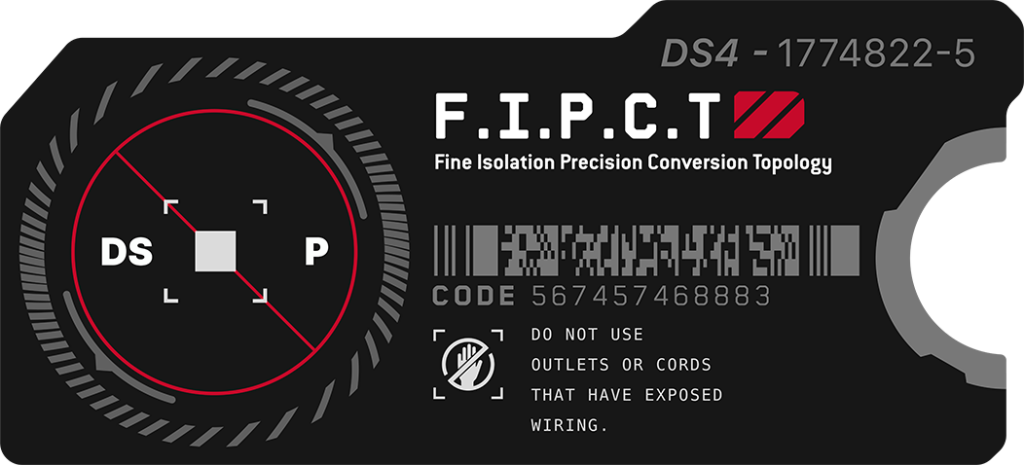
Q.P.D.P.A (Quintessential Pedersen Distributed Processing Architecture) – In WaveLab, we utilize the Quintessential Pedersen Distributed Processing Architecture (Q.P.D.P.A.) to further refine and process the audio. This architecture comprises a series of modular processing nodes tailored for different types of audio characteristics, tones, feels, and contexts. Each node in this architecture is designed to optimize batch processing, ensuring that the audio is processed in the most efficient and high-quality manner possible. The Q.P.D.P.A. allows for detailed customization and optimization, ensuring that the final audio output is of the highest possible quality.
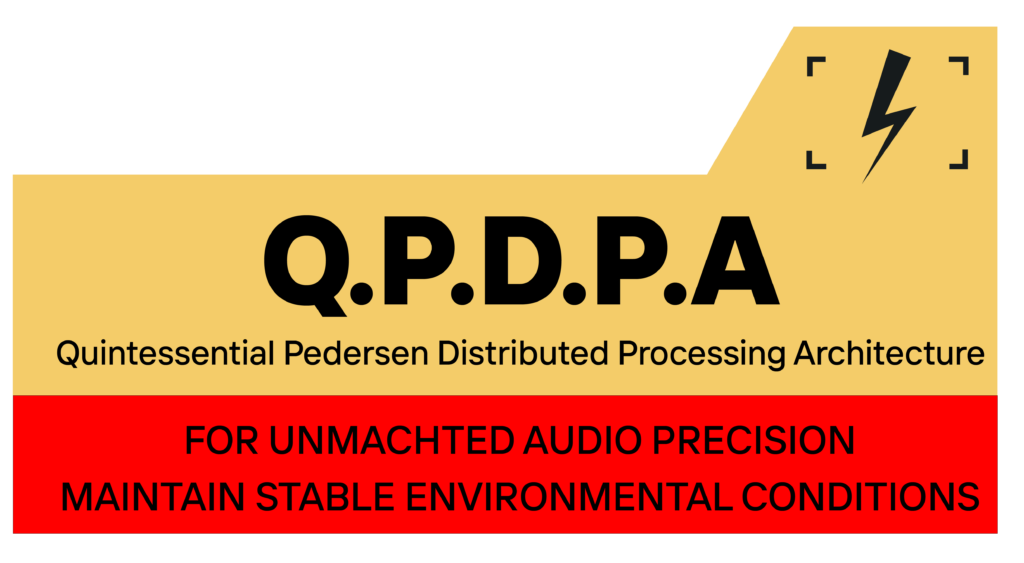
T.P.S.R. (Temporal Precision Sound Reconstruction) – The final stage of our pipeline is Temporal Precision Sound Reconstruction (T.P.S.R.). After the audio files are rendered in WaveLab, they are sent to archival storage. From there, they are imported into our game development platforms, such as FMOD and Unreal Engine. During this stage, we follow our established architecture closely to ensure that the audio remains true to the source material, even when effects and modifications are applied at runtime. The T.P.S.R. process ensures that any changes introduced during gameplay are handled with the highest level of precision, maintaining the original audio quality and enhancing the overall gaming experience.
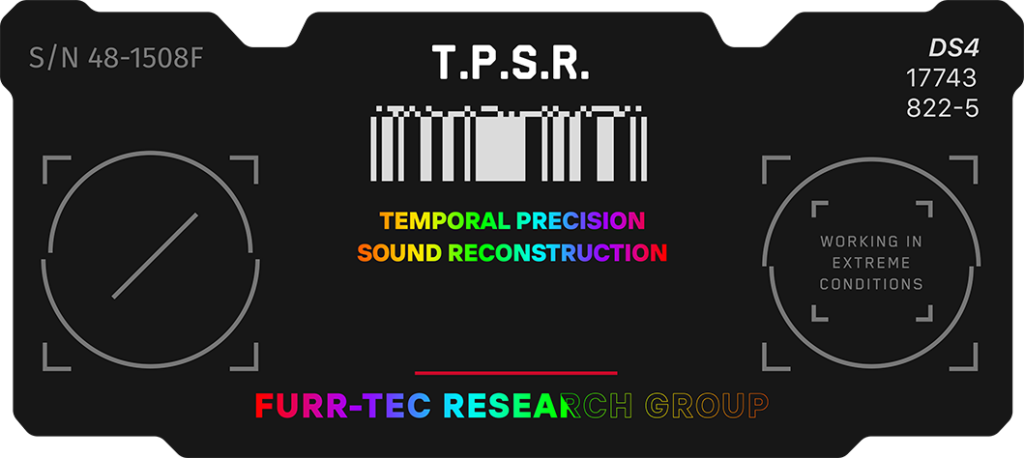
Discoveries and Research Insights
Through the development and implementation of Furr-Tec’s Audio Processing Pipeline, we have made several key discoveries and advancements in the field of high-resolution audio processing:
- Enhanced Audio Fidelity: By operating at ultra-high sample rates, we are able to capture and preserve audio details that are often lost in lower resolution recordings. This results in a richer and more immersive audio experience.
- Efficient Processing Workflows: Our proprietary and distributed processing architectures enable efficient handling of large audio datasets without compromising on quality. This is particularly beneficial in professional environments where processing speed and output quality are critical.
- Future-Proofing: Recording and processing audio at higher sample rates ensure that our audio assets are ready for future technological advancements. This foresight is essential for archival purposes and future-proofing our audio library.
- Application in Game Development: The high-resolution audio processed through our pipeline significantly enhances the auditory experience in game development. The detailed and precise audio adds depth and realism to in-game environments, making them more engaging for players.
- Sustainability: By utilizing advanced compression techniques and efficient processing workflows, we manage to maintain high audio quality while addressing the practical limitations of storage and processing power.
In conclusion, Furr-Tec’s Audio Processing Pipeline represents a significant advancement in the field of audio engineering, combining state-of-the-art tools and innovative processes to deliver unparalleled audio quality. Our commitment to maintaining audio integrity and pushing the boundaries of what is possible with high-resolution audio sets us apart as leaders in the industry.
Comprehensive Overview of Furr-Tec’s Advanced Audio Processing Techniques
Introduction to Advanced Processing
At Furr-Tec, we utilize a highly sophisticated and meticulously designed audio processing pipeline to ensure the highest levels of audio fidelity and precision. Our approach combines cutting-edge technology, advanced research, and custom-developed architectures to push the boundaries of what is possible in audio production, particularly for game development. Below, we provide an in-depth look at our processes and the extensive measures we take to achieve exceptional audio quality.
U.F.P.A. (Ultra Fine Precision Audio)
Process: We initiate our audio processing with the Ultra Fine Precision Audio (U.F.P.A.) approach, which involves creating or resampling audio files at exceptionally high sample rates, ranging from 768 kHz to 384 kHz. This high-resolution starting point ensures that we capture and maintain the utmost detail and precision in our audio data. By using 64-bit audio files throughout the design, processing, and finalization phases, we guarantee the integrity of the audio signal is preserved from start to finish.
P.T.P.A. (Proprietary Tooling Pipeline Architecture)
Process: The Proprietary Tooling Pipeline Architecture (P.T.P.A.) is our custom-designed framework for processing and finalizing high-resolution audio. During this phase, audio files sampled at 768 kHz are downsampled to 384 kHz using WaveLab. This downsampling is part of a carefully crafted batch processing workflow that maintains audio quality and integrity. Our P.T.P.A. is optimized for handling large volumes of audio data efficiently, ensuring that every sample retains its original high-fidelity characteristics.
Q.P.D.P.A. (Quintessential Pedersen Distributed Processing Architecture)
Process: The next stage involves the Quintessential Pedersen Distributed Processing Architecture (Q.P.D.P.A.), which is implemented in WaveLab. This architecture consists of modular processing nodes tailored to different audio characteristics, tones, feels, and contexts. Each node is designed to maximize batch processing efficiency while ensuring optimal output quality. This modularity allows for detailed customization and precise optimization, resulting in audio that meets the highest professional standards.
F.I.P.C.T. (Fine Isolation Precision Conversion Topology)
Process: After the initial processing, the audio files are converted into FLAC format at 384 kHz using our Fine Isolation Precision Conversion Topology (F.I.P.C.T.). This step is crucial for compressing the audio without losing any significant quality. FLAC is chosen for its ability to reduce file sizes while maintaining lossless audio quality, making it ideal for both storage efficiency and high-fidelity playback.
T.P.S.R. (Temporal Precision Sound Reconstruction)
Process: The final stage of our pipeline is Temporal Precision Sound Reconstruction (T.P.S.R.). After rendering the audio files in WaveLab, they are sent to archival storage and later imported into our game development platforms, such as FMOD and Unreal Engine. During this stage, we meticulously follow our established architecture to ensure the audio remains true to its original quality, even when effects and modifications are applied at runtime. The T.P.S.R. process ensures that any changes introduced during gameplay are handled with the highest level of precision, maintaining the integrity of the original audio.
Integration with Game Development
Once processed to FLAC 24-bit at 384 kHz, our audio files are imported into FMOD or Unreal Engine. Any necessary conversions are handled at the audio engine level within these platforms. We adjust numerous settings in FMOD/Unreal to ensure our audio quality standards are met or exceeded. The T.P.S.R. framework guarantees that our high-quality standards are maintained throughout external implementations of our Q.P.D.P.A.
Discoveries and Research Insights
Through our extensive research and development, we have made several key discoveries that significantly enhance our audio processing capabilities:
- Enhanced Ultrasonic Content Handling: Our processes effectively manage ultrasonic content, reducing distortion to nearly zero. This improvement is based on advanced methods and supported by technical design documents and public research.
- Advanced VST3 Plugin Performance: By operating at high sample rates, our VST3 plugin filters perform exceptionally well, allowing for better detection of transients and level changes. This capability enables a range of techniques such as time-shifting, phase shifting, and coloration at the Digital Audio Workstation (DAW) level or U.F.P.A.
- Optimized CPU Utilization: While high-resolution audio processing demands significant CPU resources, we find the trade-off worthwhile. With advancements in technology, such as the Ryzen 9 9000 Series and AMD EPYC CPUs with up to 192 cores, we plan to further optimize our pipeline to leverage these powerful processors. Currently, on a 12-core system with 24 threads, processing 300 files takes approximately one hour. We anticipate substantial time reductions with 64 or 192 core systems, testing the scalability of WaveLab on these configurations.
Vision and Mission
At Furr-Tec, we are dedicated to empowering the next generation of audio engineers and enthusiasts within the furry fandom. Our vision is to be a pioneering force in audio innovation, providing the tools, knowledge, and inspiration needed to push the boundaries of audio production. We believe that our work is just the beginning, serving as a stepping stone for the young furries who will follow in our footsteps.
By setting high standards and demonstrating leadership, we aim to foster a community of creativity and technical excellence. Our commitment to advancing audio technology is driven by a desire to elevate the entire furry fandom, encouraging others to reach new heights in their own projects and endeavors.
Through our rigorous research and development, we have made significant discoveries that not only enhance audio quality but also set new benchmarks for the industry. Our proprietary audio processing pipeline, which includes cutting-edge techniques such as Ultra Fine Precision Audio (U.F.P.A.), Proprietary Tooling Pipeline Architecture (P.T.P.A.), and Temporal Precision Sound Reconstruction (T.P.S.R.), showcases our commitment to innovation and excellence.
We strive to be more than just a competitor in the market; we aim to be a catalyst for change and progress. By sharing our insights and breakthroughs, we hope to inspire others to explore new possibilities and contribute to the collective advancement of the audio production field. Our goal is to create an environment where the furry fandom can thrive, supported by the best tools and knowledge available.
In essence, Furr-Tec is dedicated to nurturing the talents of young furries, providing them with the resources and inspiration to achieve greatness. We believe in the power of community and collaboration, and through our efforts, we aim to build a brighter, more innovative future for all members of the furry fandom.
